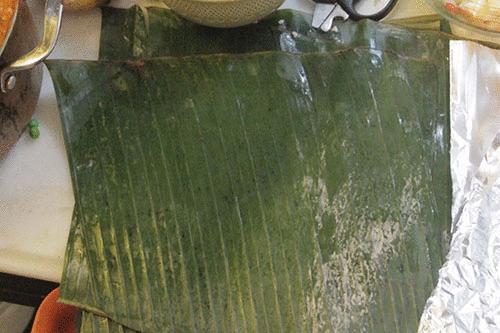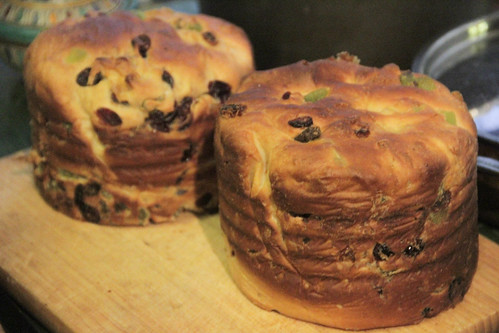Our first, and only, two-state meal! Here's why: the Holy See, as the "legal personality" of the Vatican City, is one of two non-member permanent observing states at the UN. The other, Palestine, has a cuisine well worth exploring, but setting aside quips about wine and wafers, there's nothing distinctive about Vatican cuisine, at least compared to the city of Rome that surrounds it. That said, the next UN country alphabetically happens to be a Catholic one — Honduras — and it was December, so it just made sense to do a Christmas party combining this Central American country's traditions with a few splashes of Roman cuisine. Thanks to the more than two dozen friends who stopped by and enjoyed this hybrid meal, along with random drinks left over from previous meals!
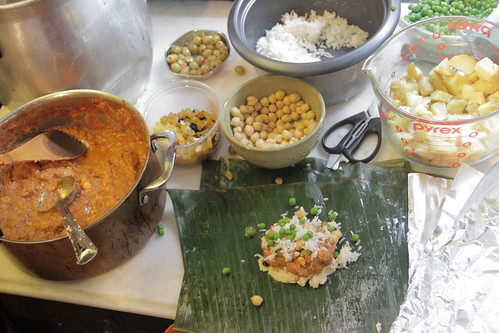
As in many Christian countries, there are ritual foods for this holiday. Without a doubt, tamales are on the top of the list — if a family makes tamales but once a year, it'll be for Christmas. Never mind that I'd made tamales recently for Guatemala, I just couldn't do a Honduran holiday meal without them. At least it's an opportunity to compare, right? Along with the tamales, I made roast pork and tried and failed at a dessert. I made up for the apparent lack of vegetables with an artichoke antipasto, and thankfully I made an Italian dessert that actually worked.
Carciofi alla romana | Artichokes with mint and parsley | Recipe
There's an herb that apparently grows in Lazio, the region Rome and the Vatican are in, called mentuccia, which they say tastes somewhere between mint and parsley, so that's substitution #1. And artichokes aren't in season, are really expensive, and aren't all that tasty this time of year, and plus it's tough to find true Roman-style artichokes, so I used hearts from a can, substitution #2. It didn't look fanstastic, but you know what, this darn thing was tasty. I mean, probably anything braised with those two herbs plus a generous dousing of olive oil and a little wine added for braising would. Maybe I'll try this someday with frozen artichoke hearts, or even an entirely different vegetable like artichoke.
Tamales | Recipe (scroll down for English)
Compared to the Guatemalan tamales two months prior, I had an easier time making these. In large part it's because the recipe I followed is less fussy, no pre-roasting all the vegetables, no complicated seed-based sauce. But with the benefit of experience, I didn't concern myself with making perfect squares out of the banana leaves, and I was fearless with adding copious amounts of fat to the masa.
As the animated image shows, there's a wide variety of ingredients in a Honduran tamale! In order, it's: a banana-leaf wrapper, lard-laden cooked corn mass, pork in a vegetable sauce colored with annatto, pimiento-stuffed olives, raisins, canned chickpeas, rice, green peas, and potatoes, wrapped up and ready for steaming. (I found the recipe ended up with way too much masa, but not enough raisins or chickpeas, relative to the pork sauce. Your results may vary.)
After an hour and a half of steaming, the textures become a gradient of mushiness, but individual nuggets retain their flavor: a briney olive, a bright burst from a pea, an incongruous bolt of sweet from a raisin. They were really convenient for the ongoing meal service of the party, as being kept warm for a few hours didn't have any adverse affect.
Pierna de cerdo al horno | Roasted pork leg | Recipe (scroll down for English)
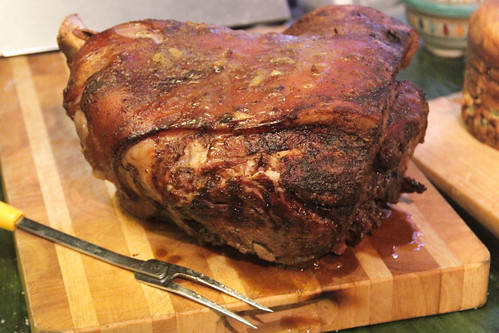
Multiple expat blogs complain that cumin is about the only commonly used spice in Honduras. I can see how that would get old, but my, this was tasty. Poke the big hunk of meat all over (I used a shoulder butt partly because I find that a hilarious term that sounds like faux anatomy, and also because I couldn't easily find a whole pork leg), insert slivers of garlic, and bathe with a cumin-wine mix overnight. Bake it low and slow, uncover and spray with water at the end to crisp up the skin, and enjoy. This whole thing was just about entirely gobbled up by the end of the evening.
Panettone | Sweet yeast bread with fruit | Recipe
There's a deep tradition of sweet cakes around Christmastime in Italy, panettone being perhaps the most famous. I'm always a fan of using unorthodox techniques and equipment to achieve results, so I was tickled to learn that instead of buying a tall, round panettone mold, I could easily use a parchment-paper-lined industrial-sized can. Chef Joe at work hooked me up with a few sparkling-clean #10-size cans that once held grape jelly, and I got to work.
I was a bit hesitant to try this recipe given the mixed reviews, but I'm glad I did. They key seems to be giving the yeast enough time to do its thing. Compared to a standard packaged panettone, this one as lighter and fluffier, quite reminiscent of a brioche. A dash of King Arthur Flour's shockingly pungent Fiori di Sicilia extract gave a lovely aroma of orange. And since I chose the fruits that went into it (raisins, apricots, and candied kiwis!), I enjoyed them. Best of all, panettone preserves and ships well, report my parents after receiving the extra!
Torrejas | Fried syrup-soaked dough | Recipe (not that it worked for me!)
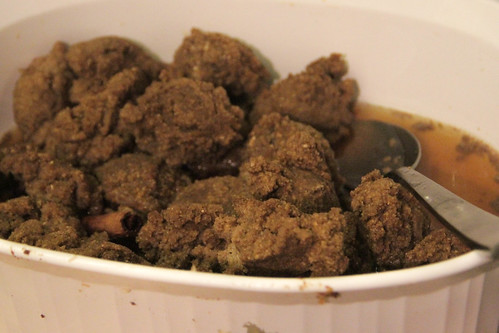
Well, this one was a dud. What I'd heard discussed as being the Honduran equivalent of French toast ended up looking and tasting really dull and unappetizing. Part of the challenge was recreating pinol, which I understand to be a sort of chocolate and cornflour blend, but I probably estimated the proportions wrong. Also, it was supposed to end up flat like slices of bread but took on the shape of uneven meatballs. And the sweet, cinnamon-seasoned syrup didn't really penetrate, so the whole thing was, frankly, gross. Oh well, at least we had panettone!
